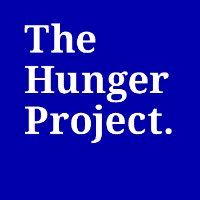In light of regional progress in the reduction of malaria rates, a major international malaria study was conducted around the Majete wildlife park in southern Malawi between 2014 and 2018. The study went in search of the most effective malaria prevention method. And it turned out: health animators from The Hunger Project make the difference.
Committed volunteers, known as animators, in each epicenter community are integral in the development and implementation of programs and educational initiatives. Animators facilitate trainings, called Vision, Commitment and Action Workshops (VCAWs), on a variety of subjects to promote self-reliance including: community volunteerism, agriculture, health, harmful traditional practices and skills development.
The animator program operates under four primary objectives:
- Achieve effective mobilization and organization of the people
- Mobilize local resources for development purposes
- Achieve effective utilization of social and economic infrastructures
- Build leadership capacity in the community
The evaluation in Malawi, funded by long-time investor Diroapthe in the Netherlands, attributed its results to THP’s unique delivery model, particularly our long-term investment in local communities, strong participation, and a mix of knowledge and physical inputs such as the epicenter building. It found an increase in access to and use of health care services, including malaria preventative services; a positive impact on food security through the community food bank’s loan inputs program and reduced pricing of maize, income-generating activities, and access to cash through Village Savings Groups; and a positive impact on gender equality through increased participation of women in epicenter governance and decision-making at the household level.
Learn more about Our Approach.
Malaria in Malawi
Malaria is endemic throughout Malawi and is a major public health problem with an estimated 6 million cases occurring annually. It is a leading cause of morbidity and mortality in children under five years and pregnant women. Malaria accounts for over 30% of outpatient visits. Mortality due to malaria has reduced, however, as demonstrated by a reduction of malaria case fatality rate from 46% in 2011 to 24% in 2014, representing a reduction of 50%.
Research Background
The Majete Malaria Project: An Integrated Approach
Through the financier of the research, the Dioraphte Foundation, Willem Takken came into contact with Rowlands Kaotcha, director of The Hunger Project-Malawi. Together they proposed to carry out the research project in the epicenter of Majete game park – also funded by Dioraphte.
The researchers knew beforehand what it took to reduce malaria, namely a combination of impregnated mosquito net use, rapid diagnosis and treatment, making houses mosquito-proof and treating mosquito breeding sites with a biological pesticide. But the last two interventions had not been investigated and compared at the same time. And what was also unique: not researchers, but the community would do this themselves – with an important role for health animators.
The researchers selected 65 villages spread over three epicenter centers around the Majete game park as a research location. In total around 25,000 people live here (at the start of the research project in 2014). Mosquito nets were distributed in all villages and volunteers were trained to convey malaria information to their fellow villagers. That was the basis. The researchers then selected a group of 46 villages, where the effect of the mosquito-closed-houses approach and larval control would be tested.
Over the past five years, around 150 health animators have been trained to ensure that 2,200 houses are made mosquito-proof, with aluminum mesh for the window openings and bricks and brickwork between the roof and walls. The animators are also trained to identify, monitor and spray breeding sites of mosquitoes. The results have now been received. Making houses mosquito-proof appears to lead to fewer cases of malaria. The mosquito population has also fallen sharply. This may be the result of the larval control, but also of the drought, as a result of which fewer water pools – and therefore breeding grounds – are created.
Willem Takken is enthusiastic: “The fact that it is therefore possible to introduce a health measure through health animators that people understand well and can apply themselves, is great. With this knowledge we can of course look at more health issues, such as diarrhea and malnutrition, both closely related to malaria. Children who have diarrhea due to polluted water are much more likely to die from malaria. Eliminating malaria will not work, but it does not have to be a fatal disease, “says Takken. This requires an integrated approach to community mobilization, poverty alleviation, clean drinking water supply and access to better healthcare. And let that be just the epicenter strategy.

Funding and Partnership
The Hunger Project in Majete received over €3.7 million in total between 2011 and 2017, for 5 epicentres. Apart from The Hunger Project, Dioraphte has also supported other activities and organisations in the Majete area, among them Majete Malaria Project, in which malaria prevention interventions and research are combined (since 2014). The research is conducted by the University of Malawi, with Wageningen University and the University of Amsterdam from the Netherlands. African Parks and THP are considered partners in the project.
2019 and Beyond
In 2019, the control villages without a house approach and larval control will also be involved in rolling out the most effective strategy, namely mosquito sealing of houses in combination with awareness and mosquito use, naturally through health animators. The effect of larval control is being further investigated. The researchers’ ambition is to apply the effectively proven malaria prevention-by-the-community in other areas and countries. The Hunger Project explores opportunities to jointly scale up and expand this approach. After all, it is high time to master the malaria mosquito.
In 2019, The Hunger Project will start mobilizing epicenter number six. Recruiting and training health animators is a fixed part of the strategy. Extra malaria activities could easily be fitted there.
